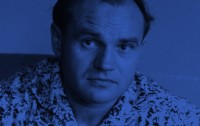Swinging Music (1970) for clarinet, trombone, cello (or double bass) and piano
During 25 years (1963–1988) of its activity the Warsaw ensemble Warsztat Muzyczny [Music Workshop] commissioned over 100 new works from renowned Polish and foreign composers. Serocki’s Swinging Music was one of them, demonstrating to the audience that even radical new music could function as a piece of real musical fun. Since its premiere in Aarhus (Denmark), on 6 September 1970, it has been a veritable hit of sonoristic music and probably Serocki’s best-known and most frequently performed piece.
The work consists of twelve sections (marked from A to N), with dynamics gradually increasing and then decreasing down to silence. It is based on a fundamental rhythmic pattern (crotchet followed by two swung quavers – “tum, ta-ta, tum, ta-ta”), which creates the composition’s pulse. It comprises 13 different timbres which appear in the following order:
- Piano – rub the tuning pins with a plastic brush
- Clarinet – play the note B silently without the mouthpiece
- Cello – strike the belly with the right hand and the sides with the left hand
- Trombone – play B flat silently; the lips should touch the mouthpiece very lightly
- Piano – strike the bent upper part of the open keyboard cover with the fingers
- Clarinet – without the mouthpiece, strike the barrel with the fingers
- Trombone – strike the mouthpiece with the palm of the hand
- Piano – strike the strings with the palm of the hand
- Trombone – blow into the mouthpiece throat adjacent to the instrument at an angle of 30 degrees
- Cello – strike all the strings on the fingerboard with the palm of the hand
- Clarinet – half enclose the mouthpiece with the hand and play
- Piano – strike the black or white keys with the palm of the hand
- Voice – pronounce the sound “ch” loudly
This way, with his unbounded sense of humour Serocki demonstrates that “instrumental colours can well replace a jazz percussionist”. He also shows that “solo variations” produced by 13 different timbres with both definite and indefinite pitches may take over the role of the melodic component of Swinging Music. Such musical gestures are very short, undeveloped, and each immediately gives way to the next one. In the coda (section N), four new timbres appear alongside a partial “recollection” of what happened in the solo variations. Moreover, 10 sound colours, used only once (one of them – pizzicato – imitates a “walking bass”) enrich the entire musical structure of Swinging Music in the preceding sections.
The clarinet, trombone, cello (or double bass) and piano – using extended techniques – create here on the one hand a kind of avant-garde “pastiche” of the concept of “swing”, and on the other – a very delightful example of a composition in which all the material is indeed exclusively based on sound colours.



